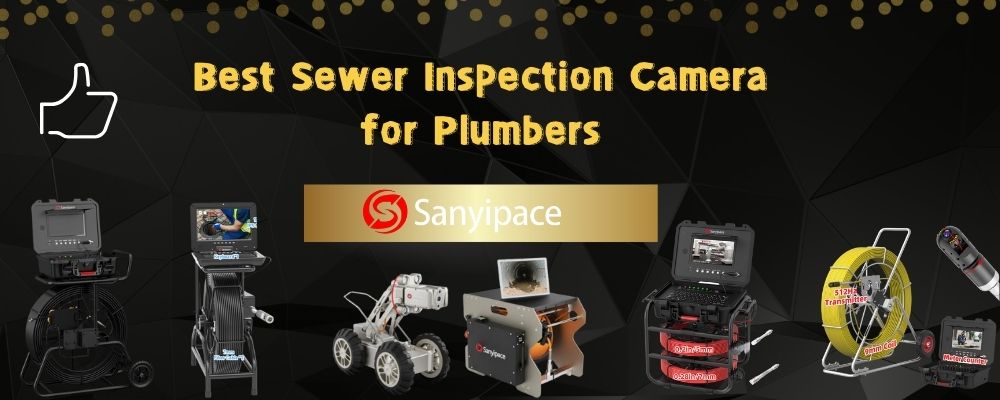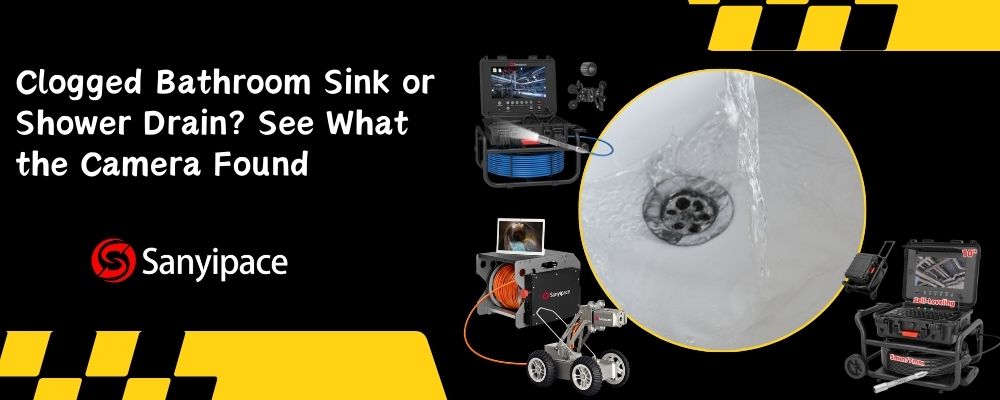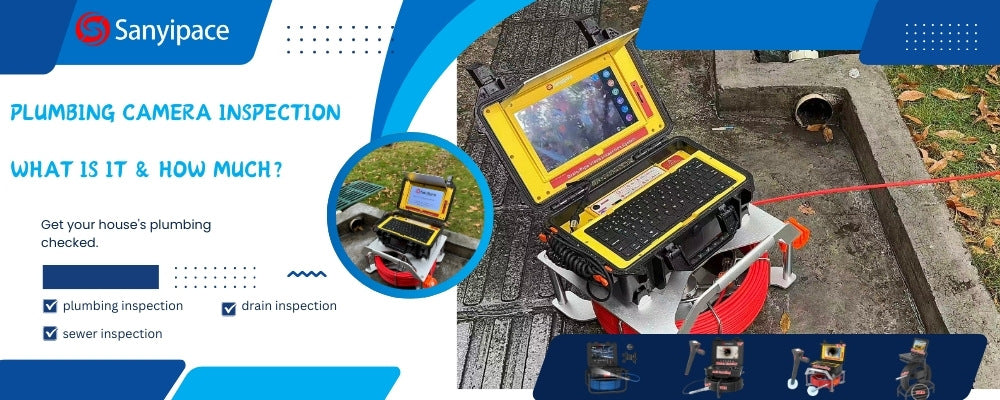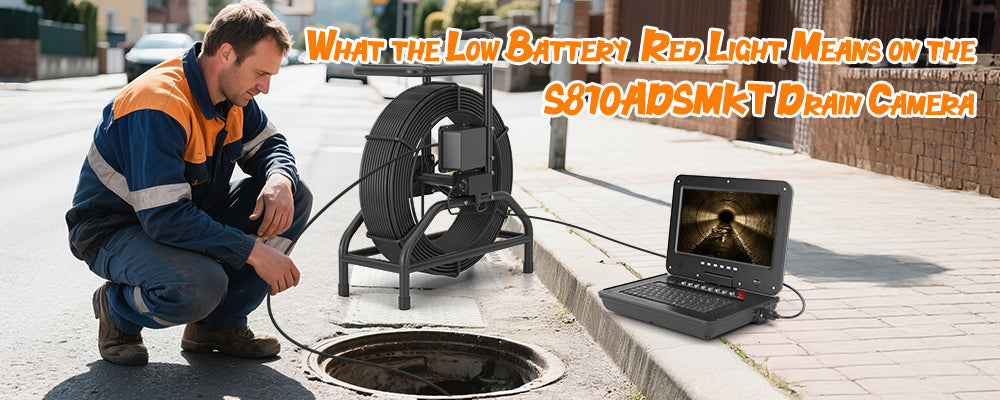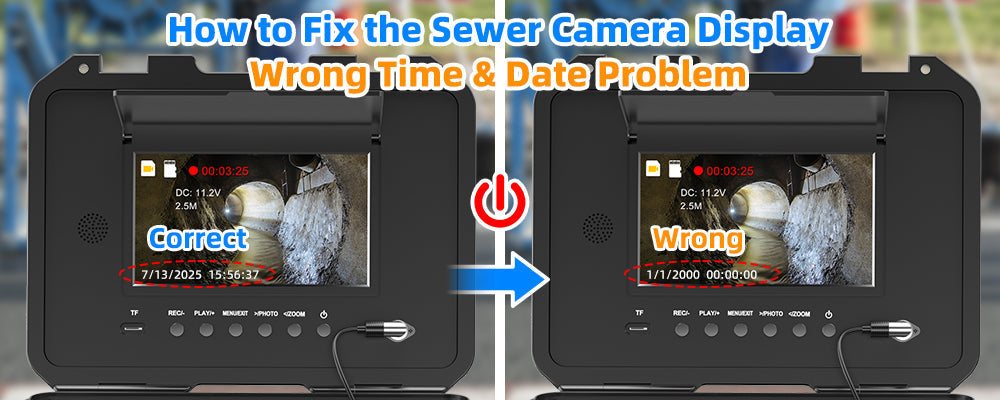Borescope vs Sewer Camera: What's the Difference?
When it comes to inspecting hard-to-reach areas, both borescopes and sewer cameras offer a clear view without tearing things apart. But while they may look similar, they serve very different purposes.
In this guide, we’ll break down the key differences between a borescope and a sewer camera—so you can choose the right tool for the job.
What is a Borescope?
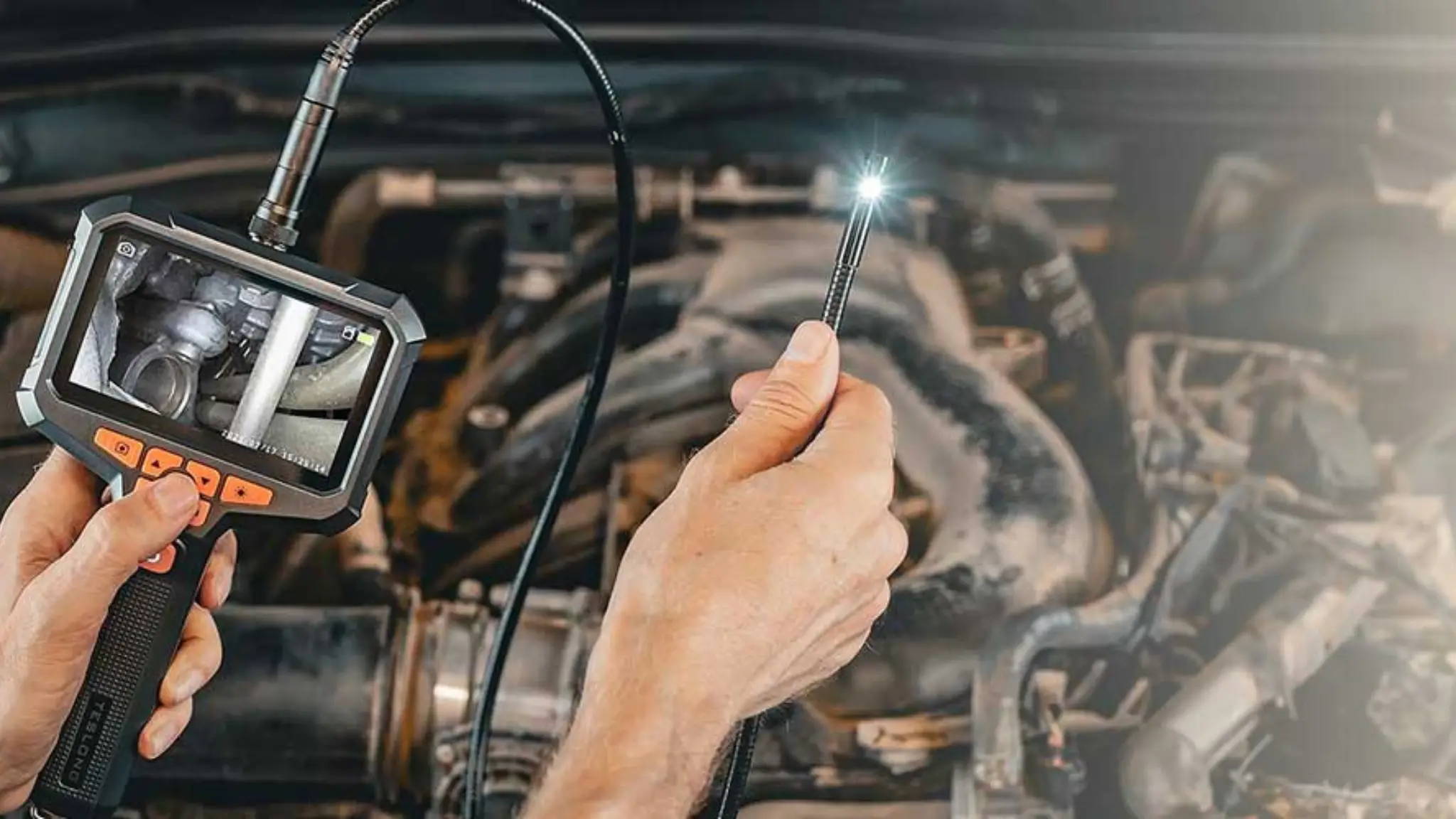
A borescope is a visual inspection tool used to look inside tight, hard-to-reach, or enclosed spaces without disassembly. It consists of a small camera mounted on the end of a rigid or flexible tube, often with built-in LED lights, and connects to a screen or mobile device to display live video or captured images.
There are two main types:
- Rigid borescopes – Offer a straight, solid tube for inspection with high image quality.
- Flexible borescopes (or videoscopes) – Use a flexible cable to navigate bends and curves.
Key Features of Borescopes
Small Diameter: Often as small as a few millimeters, making them ideal for narrow spaces.
Portability: Lightweight and easy to carry, often handheld.
Live Video and Photo Capture: Many modern borescopes have screens or can be connected to smartphones for real-time viewing.
LED Lighting: Built-in LEDs provide illumination in dark spaces.
Versatile Use: Suitable for non-plumbing tasks such as automotive inspection, HVAC maintenance, and even wall cavity inspections.
What is a Sewer Camera?
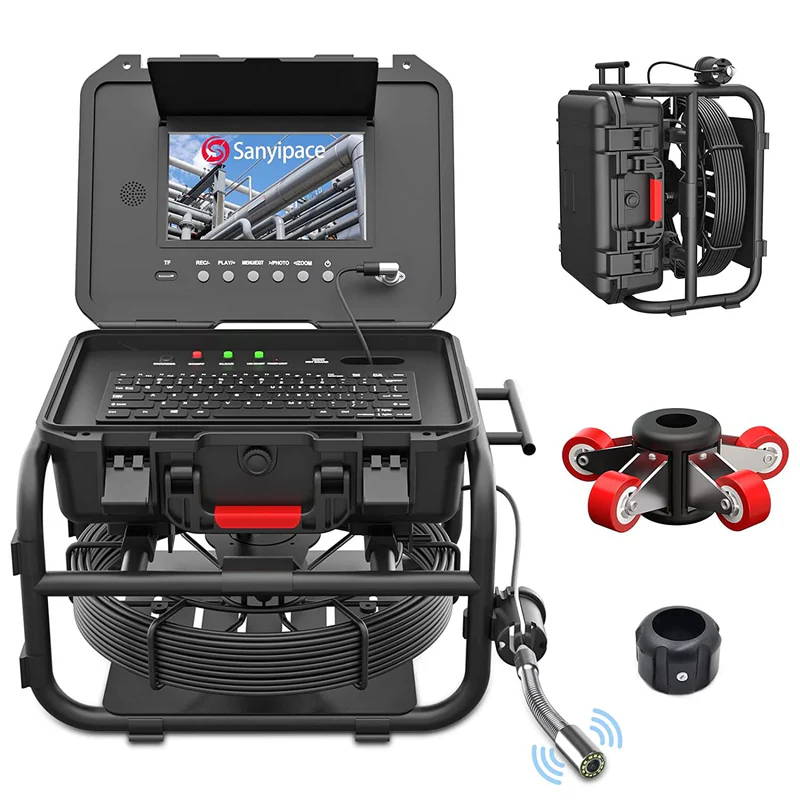
A sewer camera, also known as a drain camera or pipe inspection camera, is a rugged inspection device specifically designed for inspecting the inside of pipelines. It typically consists of a waterproof sewer camera head, LED lights, and a set of cables that can navigate through pipes and drainage systems, transmitting real-time video to a connected display screen.
Sewer cameras are widely used by professional plumbers to diagnose common issues such as blockages, pipe cracks, root intrusion, and pipe misalignment, making the inspection process faster, more accurate, and less invasive.
Key Features of Sewer Cameras
Pipe Size Compatibility: Designed for larger pipes, typically suitable for pipes 1.5 inches (about 38 mm) in diameter or above.
Extended Cable Length: Usually equipped with 100 to 400 feet (30 to 120 m) of push cable, allowing deep and long-distance pipe inspections.
Waterproof and Durable: Built to withstand wet, dirty, and high-pressure environments with a rugged and sealed construction.
High-Resolution Camera: Delivers clear visuals to accurately identify cracks, clogs, or structural defects within the pipe.
Locating Technology: Many models—such as those from Sanyipace—feature built-in sondes or transmitters that work with locating devices to pinpoint the camera’s underground position.
Meter Counter Function: Displays the length of cable pushed in real time, supports both meters and feet, and includes a reset (zeroing) feature for flexible use.
Self-Leveling Sewer Camera: Automatically keeps the video feed upright, making it easier to interpret the pipe’s internal condition from the screen.
Borescope vs Sewer Camera: The Difference
While both borescopes and sewer cameras are designed for internal inspection, they serve different purposes and are built with distinct features. Here’s a detailed breakdown across key factors:
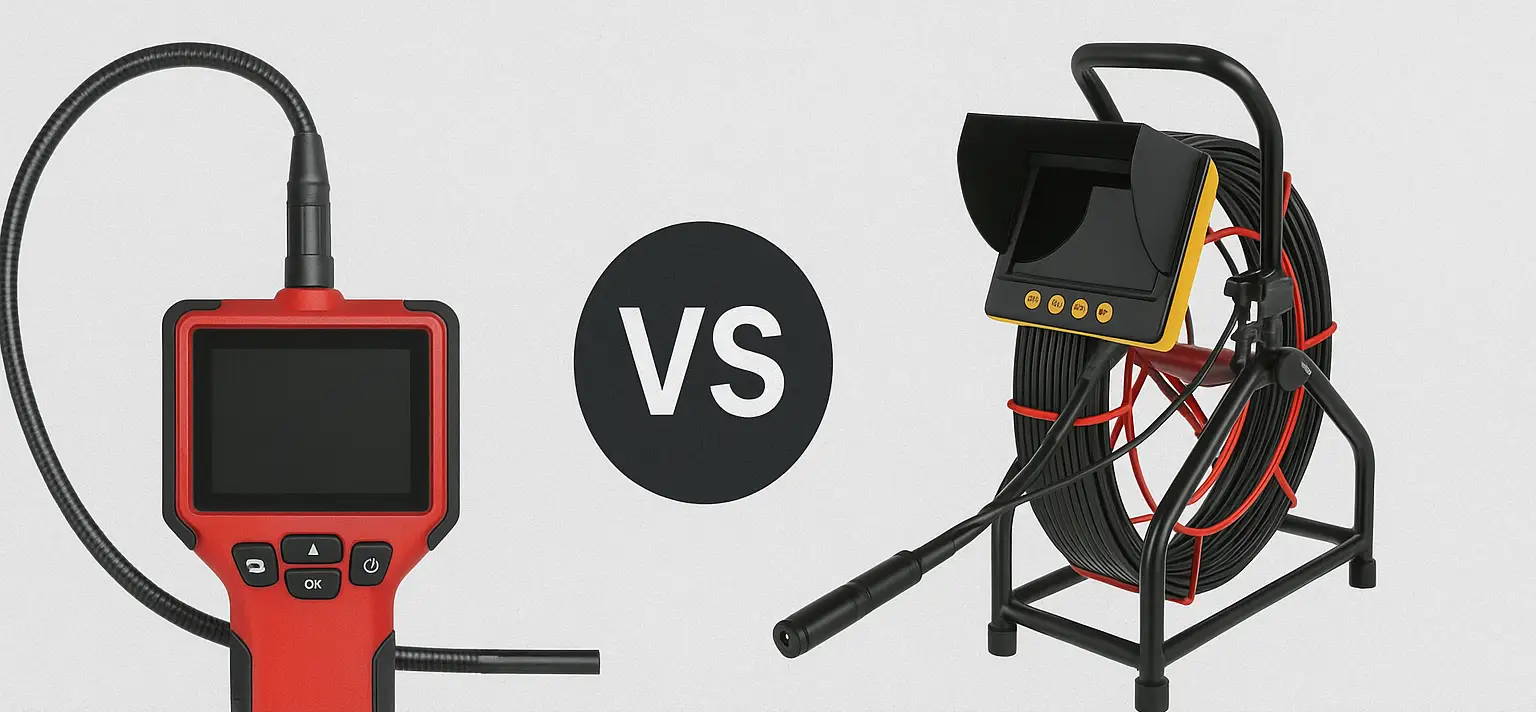
1. Intended Use
Borescope: Designed for general-purpose visual inspections in tight, dry, or mechanical spaces — such as engines, machinery, walls, and HVAC systems.
Sewer Camera: Specifically built for inspecting plumbing systems, sewer lines, and drainage pipes — often used to locate blockages, root intrusions, or pipe damage.
2. Camera Size & Probe Diameter
Borescope: Much smaller camera heads (usually 3–8 mm in diameter), ideal for inspecting narrow, confined spaces.
Sewer Camera: Larger, reinforced camera heads (typically 17–40 mm), suitable for pipes with diameters of 1.5 inches (38 mm) or more.
3. Cable Length & Flexibility
Borescope: Shorter cable lengths, generally 1–5 meters (3–16 feet), semi-rigid or flexible for precise maneuverability.
Sewer Camera: Much longer push cables, typically 30–120 meters (100–400 feet), are built to navigate long pipelines and bends.
4. Waterproof & Durability
Borescope: Some models offer splash resistance or light waterproofing, but are not designed for heavy moisture or submersion.
Sewer Camera: Fully waterproof (often IP67 or IP68 rated), with durable construction to withstand water, dirt, and high-pressure environments.
5. Image Quality & Lighting
Borescope: High-resolution available on many models, with adjustable LED lights for close-up inspections. Often enough for general diagnostics.
Sewer Camera: Typically features higher-grade lenses and stronger LED lighting, optimized for low-light, large-pipe environments. Many come with self-leveling and night vision capabilities.
6. Display & Connectivity
Borescope: Often connects to smartphones/tablets via Wi-Fi or USB; some have built-in screens. More compact and portable.
Sewer Camera: Usually comes with a built-in rugged monitor or display case, offering real-time footage and additional functions like footage recording, meter counters, and locator compatibility.
7. Target Users
Borescope: Ideal for DIY users, technicians, mechanics, and engineers needing occasional internal inspections.
Sewer Camera: Designed for professional plumbers, contractors, and maintenance crews who require deep pipe diagnostics.
8. Price Range
Borescope price: Generally lower cost, especially for consumer-grade models (starting from
Sewer Camera Price: Higher-priced due to more advanced features and robust build quality (often
How to Choose?
- Choose a Borescope if you’re inspecting engines, electronics, HVAC systems, or inside walls. It’s portable, affordable, and great for general use.
- Choose a Sewer Cameraif you need to inspect drain lines, plumbing systems, or underground piping. It’s a heavy-duty tool that pays off in time savings and precision.
Conclusion
In conclusion, both borescopes and sewer cameras are highly practical tools for inspecting the inside of pipes. Borescopes are compact and portable, best suited for tight, dry spaces. Sewer cameras, on the other hand, are specifically designed for more demanding inspections, featuring waterproof construction, longer cable lengths, and advanced functions like distance counters and locators—ideal for inspecting larger pipes such as sewers and drainage systems.
Through this article, you’ve learned the key differences between the two in terms of structure, functionality, and application. We hope this helps you choose the right inspection tool for your needs.
If you need assistance, feel free to contact our online support team—we’re here to help!





